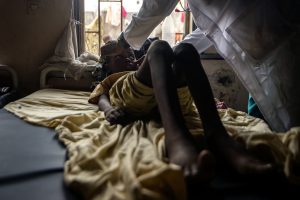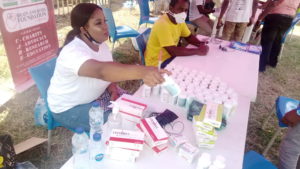Kindly sign up
Kindly sign in
The use of Aloe Vera Extracts in the Management of Sickle Cell Disease (SCD) Patients aged 6 months to 12 years
This is a research into the use of a known extract from Aloe vera named (Acemannan) on sickle cell disease patients in select hospitals in Abuja, Nigeria.
Sickle cell anemia is prevalent in Africa, the Middle East, and parts of India. It is common in geographical areas where malaria is widespread. Hemoglobin in most individuals is present in soluble form. However, in sickle cell disease, hemoglobin precipitates as insoluble crystals, which lead to an abnormal shape and size of red blood cells (RBCs) with subsequent phagocytosis of the effected corpuscles (Porter, 2018; Badawy et al., 2018). In sickle cell disease, the combination of ongoing hemolysis (rupture of RBCs), blood vessel blockage, frequent infections, and the body’s attempt to deal with these conditions (via the immune system’s inflammatory response) all combine to create an internal environment, which is toxic.
50-70% of all children born with sickle cell disease in Nigeria will not live to see their fifth birthday because of death from complications of the disease. Current drugs available (blood tonics, hydroxyurea, pain relievers, antibiotics and antimalarials) alone are not efficacious enough, and doctors are thus limited in their treatment of the disease. Moreover, people in remote areas where there is little to no access to good health care tend to have more crises and complications.
Challenges involved in addressing brain disorders and SCD in Nigeria:
- Finance/Funding: Poor availability of resources to the public health and welfare sectors and economic inflation are severely curtailing access to appropriate medical and social services.
- Location/access to services: Most of the clinical services are located in the capital cities, often the largest urban areas, where the professionals also often lecture at the medical schools. SCD patients must often travel long distances to consult with a doctor in the city. This situation is frustrating to the families of a growing number of surviving SCD patients in rural communities with lower to middle-income families.
- Lack of basic amenities: The facilities and basic infrastructure (uninterrupted power supply, for example) needed to support standard sickle cell disease diagnosis (e.g. full blood count and genotypic testing) and treatment are lacking. Efforts to create more awareness of SCD are paradoxically increasing frustration and stigmatization in the absence of a commensurate improvement of services.
- Ignorance: Illiteracy, cultural beliefs, poverty, and other factors all contribute to a widespread level of ignorance, even among the more well off of society. Any measures aimed at enhancing the sensitization of health professionals, policymakers, and resource allocators to the pertinent issues in the control of SCD would seem to be at this stage an important step in the right direction.
What is needed is a safe approach to treating sickle cell disease patients in remote as well as in urban areas.
The choice of natural products for management of different conditions is increasing worldwide, due to the effectiveness, affordability and fewer side effects of such treatments. Aloe vera is one of the most popular medicinal plants, widely used for the prevention or treatment of skin diseases, metabolic diseases, cardiovascular diseases and cancers throughout the world.
It has been used in traditional and folk medicines for thousands of years to treat and cure a variety of diseases. Although the plant is native to northern parts of Africa, it has rapidly spread across the world because its cultivation is easy. The plant has been used by Egyptians, Assyrians, and Mediterranean civilizations, as well as in Biblical times. A variety of aloe species are still used in folk medicines of Africa and Asia. Hunters in the Congo reportedly rub their bodies in the clear mucilaginous gel to reduce perspiration; some African tribes apply the gel for chronic conjunctivitis; the gel is used in India for the treatment of asthma (Morton, 1961).
We propose to examine the role of the aloe vera leaf extract – acemannan – in improving the quality of life and reducing complications of sickle cell disease patients, with a view to establishing it as an adjunct in the management of sickle cell disease.
We will be working with a company called Alovea, to study the effects of Acemannan (an aloe vera extract) on children between the ages of 6 months and 12 years, to see how it improves their quality of life.
We will work with government hospitals in Nigeria, and at the end of the six-month process, we hope to prove the benefits of the supplement on children with sickle cell disease.


